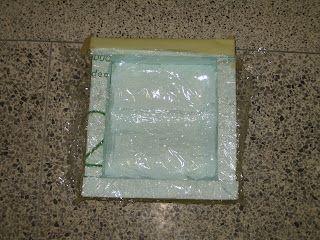Since my last post at the end of phase 2 my project has started to take a different direction. I've strayed away from traditional wayfinding to develop a concept that will brand Lota, and improve the state of their public spaces, while still directing visitors to points of interest throughout the city.
The proposed concept will be a public art project to create unique seating solutions for Lota's public spaces. They will be modular and made from a combination of concrete, metal, and possibly wood. The residents of Lota will paint each piece either by themselves or in groups, and then deliver them to a public area for display. It is my hope that the final products be colourful and eclectic. This will, not only draw attention to them from afar, thus, luring curious onlookers into the spaces they inhabit, but will create an interesting visual effect that mimics the colourful, beautiful spirit of Lota and its people and becomes a memorable feature for outsiders.
Because Lota has many graffiti artists, the painted furniture will be painted and altered by them as well, thus changing Lota's landscape as its people change or see fit for it to change.
 During phase 3 we are supposed to develop a test plan to identify which issues need to be tested, and how this will be done. We are also meant to begin building test models for phase 4.
During phase 3 we are supposed to develop a test plan to identify which issues need to be tested, and how this will be done. We are also meant to begin building test models for phase 4.The three pictures to the right illustrate my process of pouring concrete. This was done to create test samples to be painted on during one of my tests, but through working with the concrete I also learned quite a bit and it helped me to refine my test plan further. It helped me to visualize how concrete is mixed and poured and how it settles. It also helped me to get a clear idea of how exactly the final product could be manufactured and it helped me to gain an appreciation for just how heavy concrete is (each 10x10x4 tile I made is approximately 15 pounds).
As far as my test plan itself is concerned, below I have outlined each test to be carried out, and what types of models I will need to produce to complete each test.
Test 1: Formal Configurations
This test will help to refine the final form of my design. In this test I will provide scaled models to users who are familiar with Lota. With these models they will be asked to choose their favorite and arrange them into patterns.
 Test 2: Social interaction
Test 2: Social interactionOnce an overall form is chosen from test 1. A few fullscale rough models will be produced and subjects will be asked to sit in the chairs in groups of 2 or 3 to have a casual conversation. This test will assess overall comfort, and give me a clear idea of how people will use the product, and how effective its design is.
Test 3: Radii
With full scale models, similar to those used in test 2, I will determine the comfort of the edge radii behind users' knees and on the inside edges of the arm rests.
Test 4: Connectors
After sourcing a number of different connectors, and discussing my project with professionals that have experience using concrete I will attempt to determine the most appropriate method of connecting the furniture to one another so that it is relatively simple to assemble, but more difficult to disassemble to discourage vandalism.
Test 5: Painting
Using the test tiles featured above i will test how paintable the surface is, find out which tools work better than others, and gain an understanding of how the final product will look.

No comments:
Post a Comment